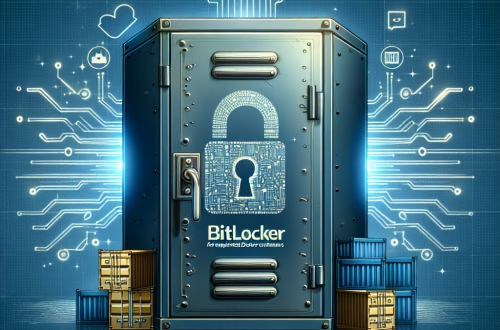bitlocker recovery key after windows update Explained
The BitLocker recovery key after a Windows update is a 48-digit numerical password required to unlock a BitLocker-encrypted drive when normal authentication mechanisms fail. This typically occurs after certain Windows updates, especially major version upgrades or changes to the system’s Trusted Platform Module (TPM). The recovery key ensures that users can regain access to their encrypted data if the system detects unauthorized changes or fails to authenticate the drive automatically. Common triggers for this scenario include hardware modifications, TPM resets, or updates that alter system boot configurations.
What This Means for You
- Immediate Impact: If the BitLocker recovery key is required after a Windows update, your system will be unable to boot, rendering your data inaccessible until the recovery key is entered.
- Data Accessibility & Security: Without the BitLocker recovery key, your encrypted data may be permanently lost. Always ensure your recovery key is securely backed up in multiple locations, such as a Microsoft account, a USB drive, or a printed copy.
- System Functionality & Recovery: Failure to resolve this issue may leave your computer unusable. Troubleshooting often requires accessing the recovery environment or using advanced tools like
manage-bdein the Command Prompt. - Future Outlook & Prevention Warning: Ignoring recurring BitLocker recovery key prompts can lead to unexpected data loss. Proactively understanding BitLocker’s behavior and ensuring TPM compatibility with Windows updates is crucial for long-term system stability.
bitlocker recovery key after windows update Solutions
Solution 1: Entering the Recovery Key
When prompted for the BitLocker recovery key after a Windows update, follow these steps to regain access:
- Locate your BitLocker recovery key. It may be saved to your Microsoft account, a USB drive, or a printed document.
- Enter the 48-digit recovery key when prompted on the BitLocker recovery screen.
- Restart your computer to resume normal operation.
If the recovery key is not recognized, ensure it matches the exact key associated with the encrypted drive. Common pitfalls include typing errors or using an outdated key.
Solution 2: Resetting the TPM
If the issue stems from a TPM reset or incompatibility after a Windows update, resetting the TPM may resolve the problem:
- Access the BIOS/UEFI settings by restarting your computer and pressing the designated key (e.g., F2, Del, or Esc) during startup.
- Locate the TPM settings and reset the TPM module. This process varies by manufacturer.
- Reboot your system and enter the BitLocker recovery key when prompted.
Note: Resetting the TPM may require reconfiguring BitLocker settings. Always back up your recovery key before proceeding.
Solution 3: Using the Command Prompt for Advanced Troubleshooting
If the recovery key does not work or the system fails to boot, use the Command Prompt from a recovery environment:
- Boot into the Windows Recovery Environment (WinRE) by restarting your computer and pressing F8 or using a recovery drive.
- Open the Command Prompt and use the
manage-bdecommand to check the BitLocker status: - If necessary, temporarily suspend BitLocker to allow the system to boot:
- Restart your computer and re-enable BitLocker after resolving the issue.
manage-bde -statusmanage-bde -protectors -disable C:This method is useful for identifying and addressing underlying issues with BitLocker encryption.
Solution 4: Data Recovery Options
If all other solutions fail and you are unable to access your data, consider specialized data recovery services. Ensure you provide the recovery key to maximize the chances of successful data retrieval. Note that data recovery can be costly and time-consuming, so prevention is always the best approach.
People Also Ask About
- Why does BitLocker ask for a recovery key after a Windows update? It often occurs due to changes in the system’s boot configuration or TPM settings during the update process.
- Can I bypass the BitLocker recovery key? No, the recovery key is essential for unlocking the encrypted drive if normal authentication fails.
- How do I find my BitLocker recovery key? You can retrieve it from your Microsoft account, a USB drive, or a printed document where it was saved during setup.
- What should I do if I lose my BitLocker recovery key? Without the recovery key, data recovery is nearly impossible. Always back up the key securely.
- Does resetting the TPM affect BitLocker? Yes, resetting the TPM may require reconfiguring BitLocker and using the recovery key to unlock the drive.
How to Protect Against bitlocker recovery key after windows update
- Regularly back up your BitLocker recovery key to multiple secure locations, such as a Microsoft account, a USB drive, and a printed copy.
- Ensure your system’s TPM firmware is up to date before performing major Windows updates.
- Verify that BitLocker settings are compatible with your system’s boot configuration after updates.
- Use the
manage-bdecommand to monitor BitLocker status and resolve issues proactively. - Test your recovery key periodically to ensure it is accessible and functional.
Expert Opinion
Understanding and managing the BitLocker recovery key is critical for maintaining data security and system accessibility, especially after Windows updates. Proactive measures, such as securely backing up the recovery key and ensuring TPM compatibility, can prevent unnecessary downtime and data loss.
Related Key Terms
- BitLocker recovery key not working
- TPM error BitLocker
- BitLocker drive encryption stuck
- manage-bde command prompt
- Windows 10 BitLocker fix
- BitLocker automatic unlock issue
- Windows update BitLocker lockout
*Featured image sourced by Pixabay.com





